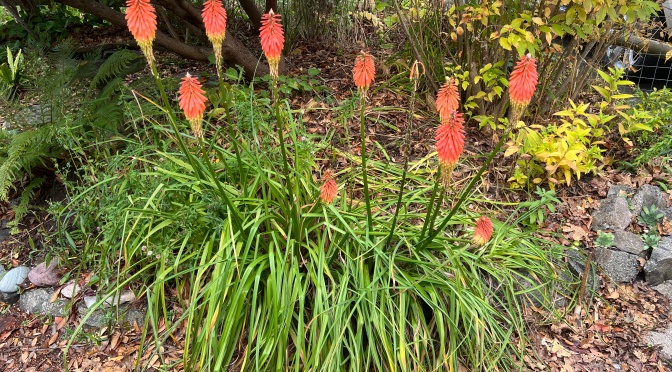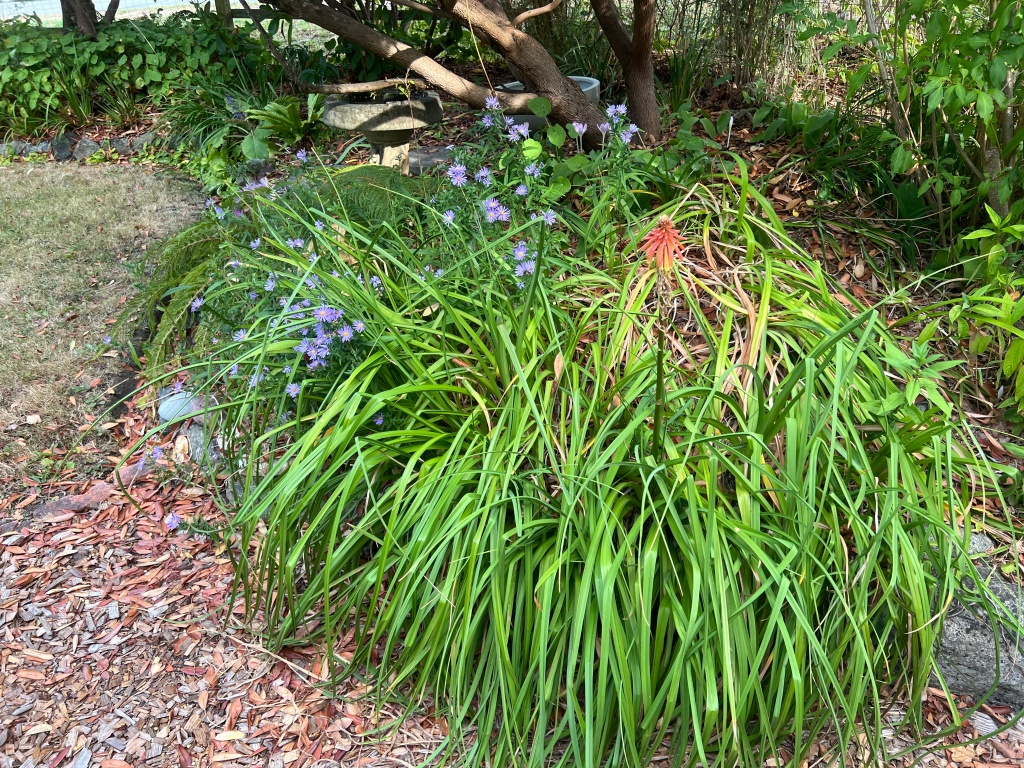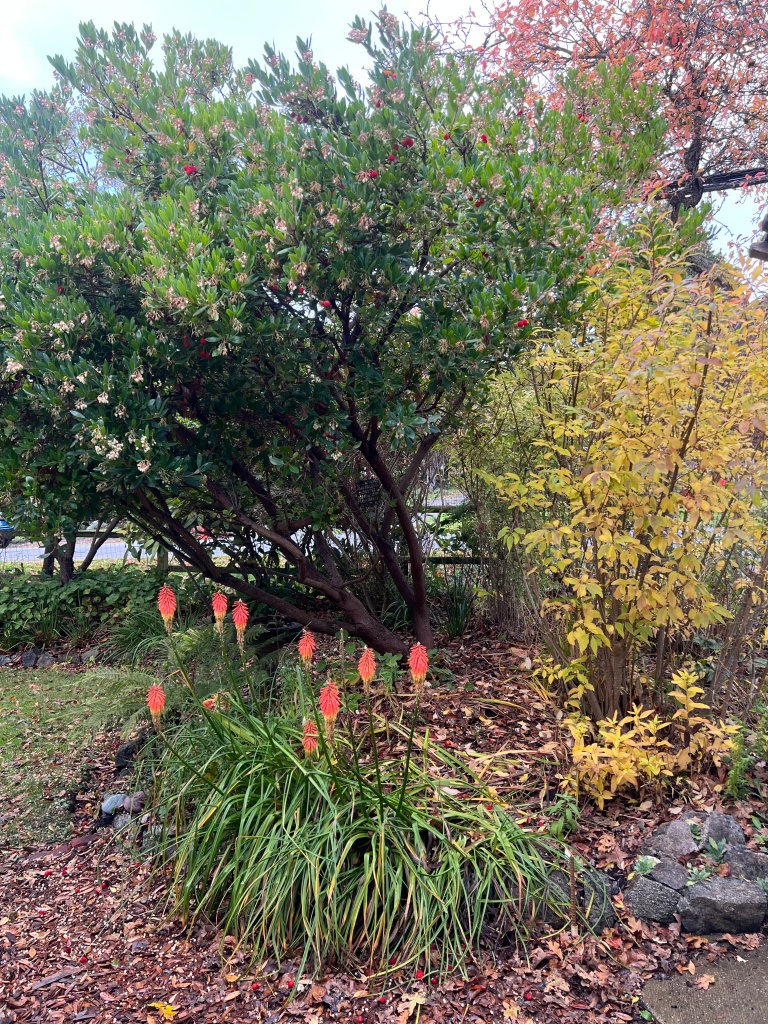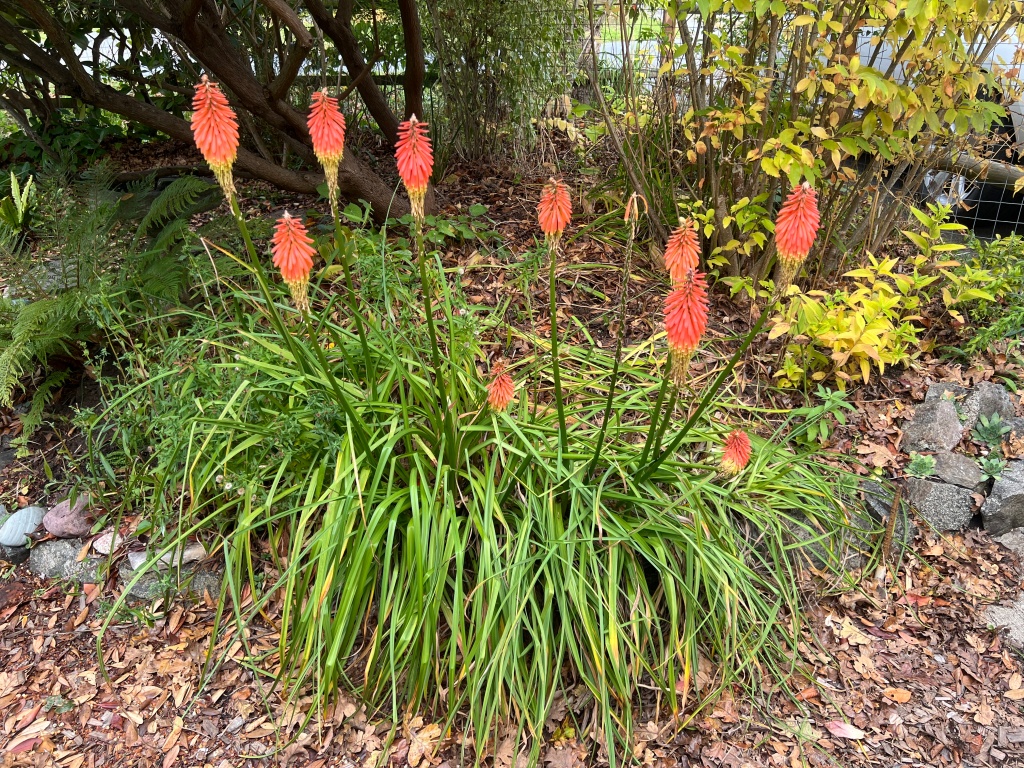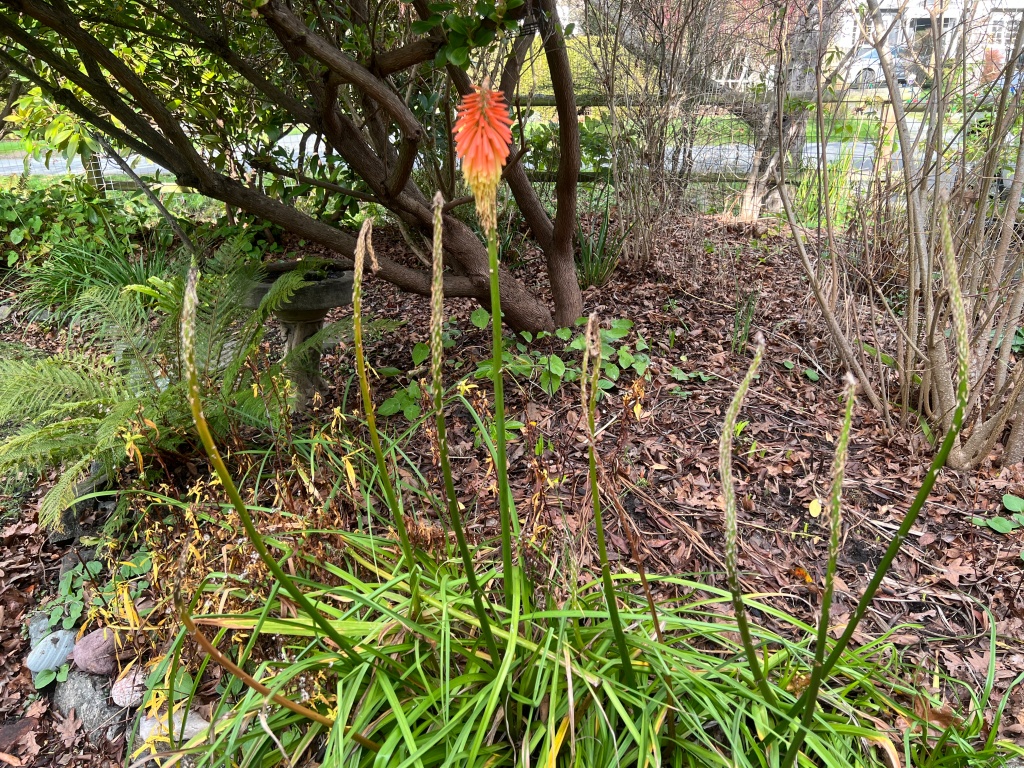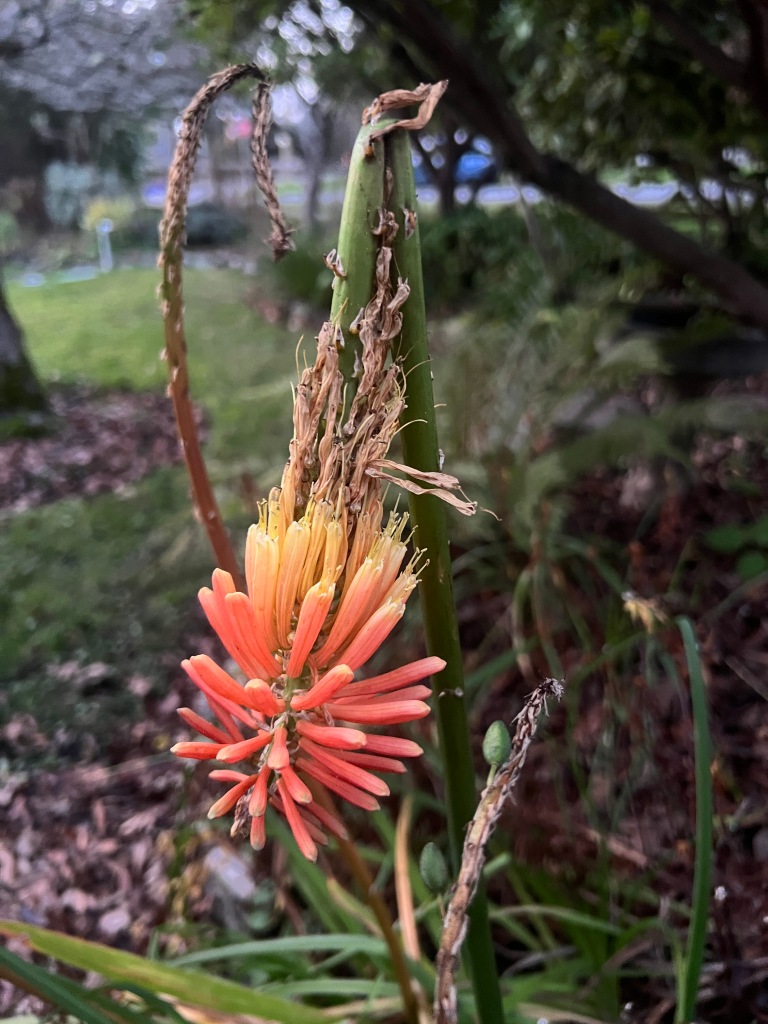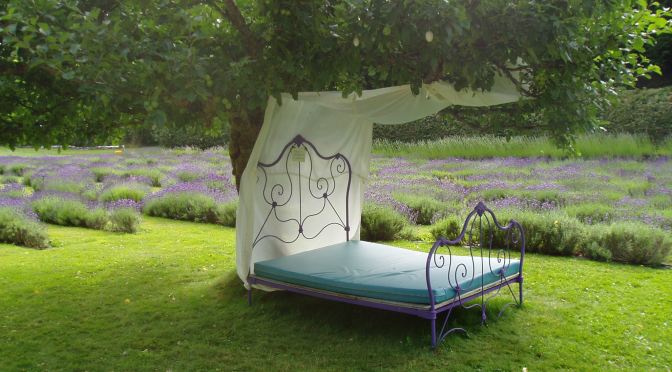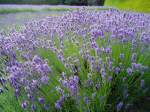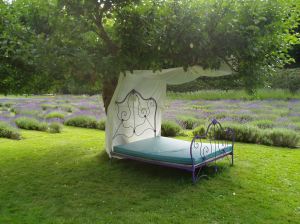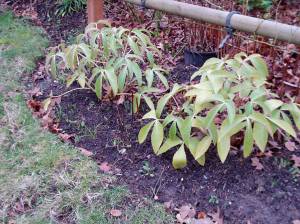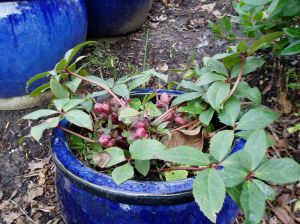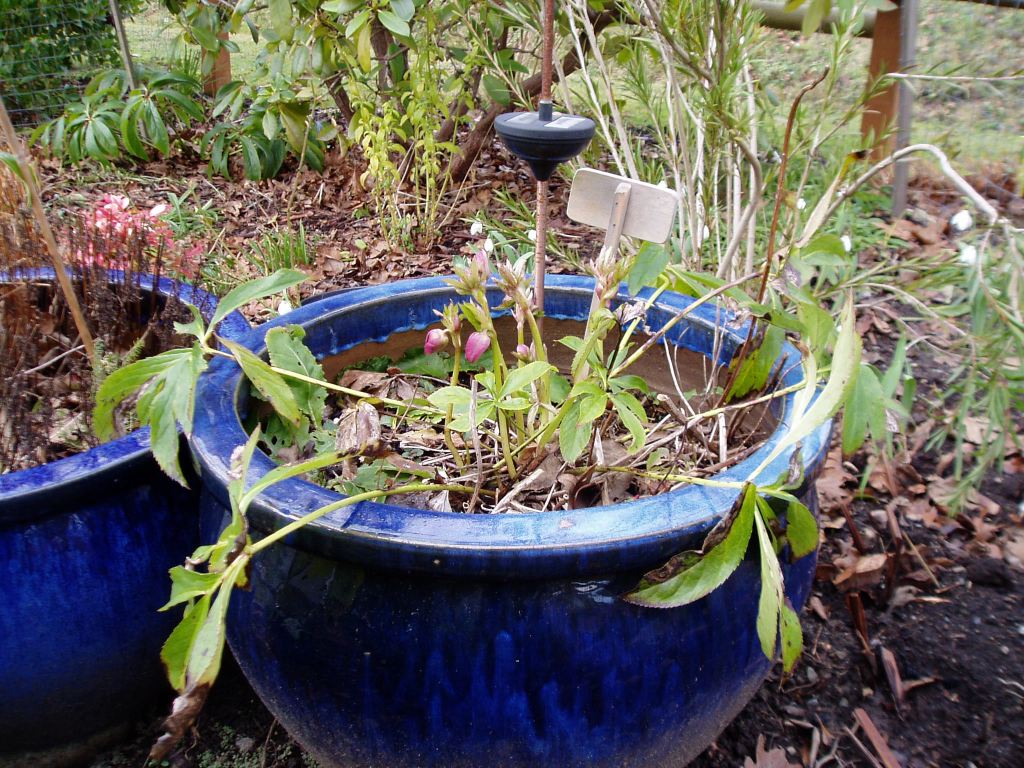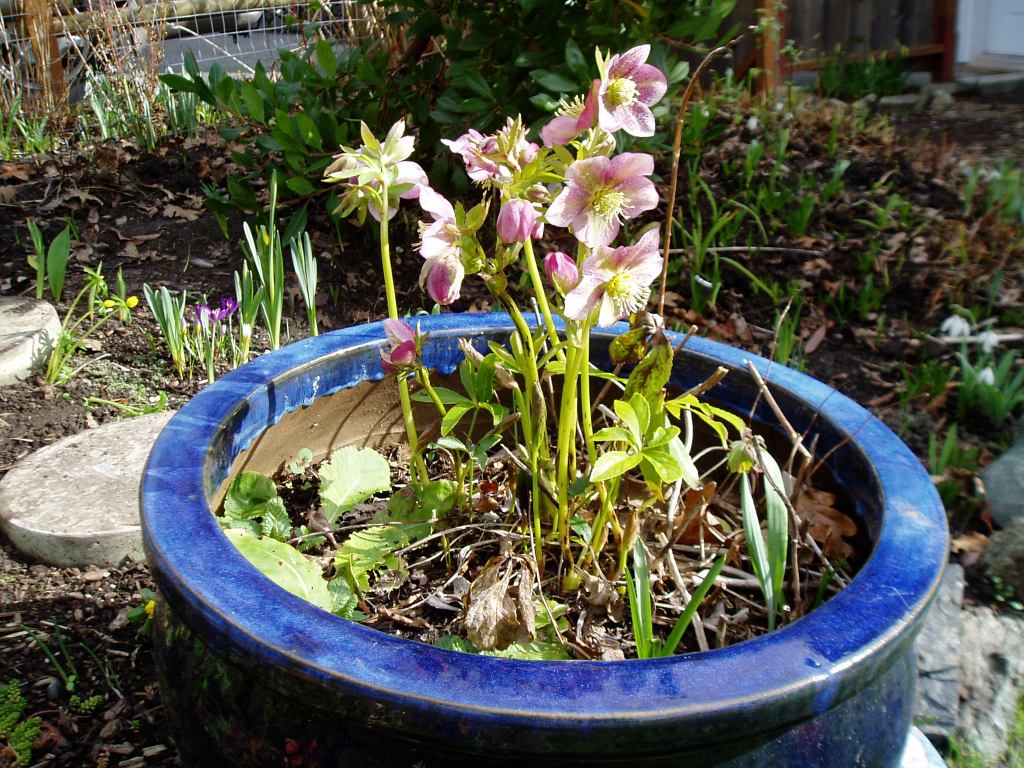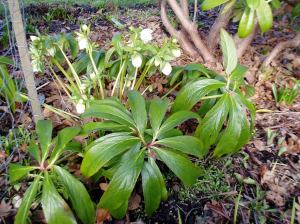The first fall Kniphofia bloom opened in early September. A lonely orange ember floating above a mass of strappy green leaves. I was delighted to see it as so many voluptuous summer colours had faded in the sunshine. I was NOT ready for the show to be over.
To start with, it was the native asters that I was more pleased about. They were putting on more of a show this year — even the deer hadn’t sheered them back too much. But it’s nice to have a variety of colours in the garden as so much was brown from seasonal drought.
To my delight, several more Torch Lily blooms quickly followed. Our own little fireworks display!
I’d traded some of our May-blooming Kniphofia for this unusual fall-blooming type. Fortunately for us, it likes its new home.
By October, the asters were finishing, & the Red Hot Pokers became the star, enhanced by the fall colours of the forsythia in the background.
Even through November, they practically glowed in the autumn sunshine. (And stood tall against the occasional storm).
Through these months, the hummingbirds were either feeding on the kniphofia nectar or resting amongst the blooms & red fruit of the strawberry tree. They were around so much, there’s a good chance they took up residence, but I couldn’t find a nest. Perhaps they just roost at this time of year?
By December, the trees had shed all their leaves & most of the garden looked forlorn. Honestly, the Kniphofia looked worse for wear, too, but some of the blooms held on. I couldn’t help but admire their tenaciousness — after all, they were 3 months in! A public garden would have staff get in there to tidy things up right away. My hands were busy raking leaves & clearing ditches before the next dump of rain… besides, I wanted to see just how long the spikes of colour could last.
At the very end of December, one lonely torch smiled at me from outside the window as I drank my morning coffee inside our cozy home.
Then, one chilly morning in early January — after 4 months of constant blooming — the show was over.
Sort of.
The last stem had bent under the weight of its torch. The elements had taken their toll. The flame continued — but now it was upside down!
OK, I know it’s a stretch, but I cheered it on even though I had to admit it was finished. The Red Hot Poker had toughed it out where others had died off.
Four months of colour is fabulous for any perennial — in any season. But through the entire autumn? That is extra special.
Fall kniphofia is a keeper.
🙂
-30-

